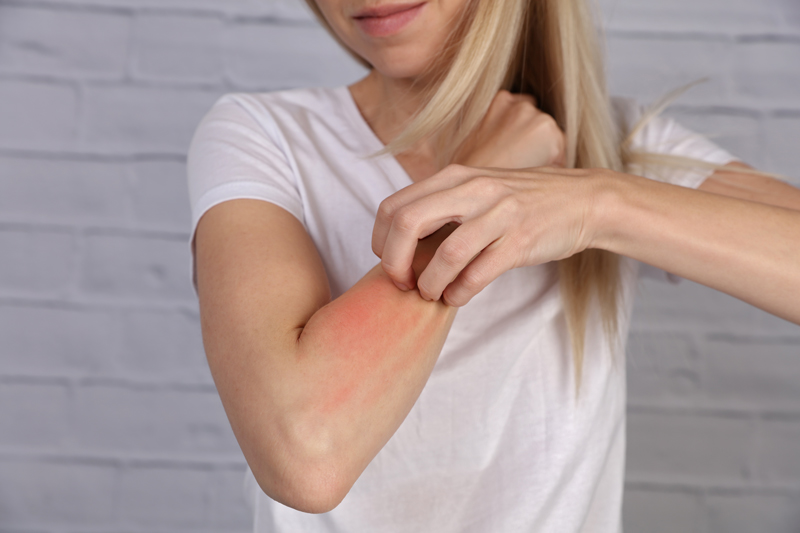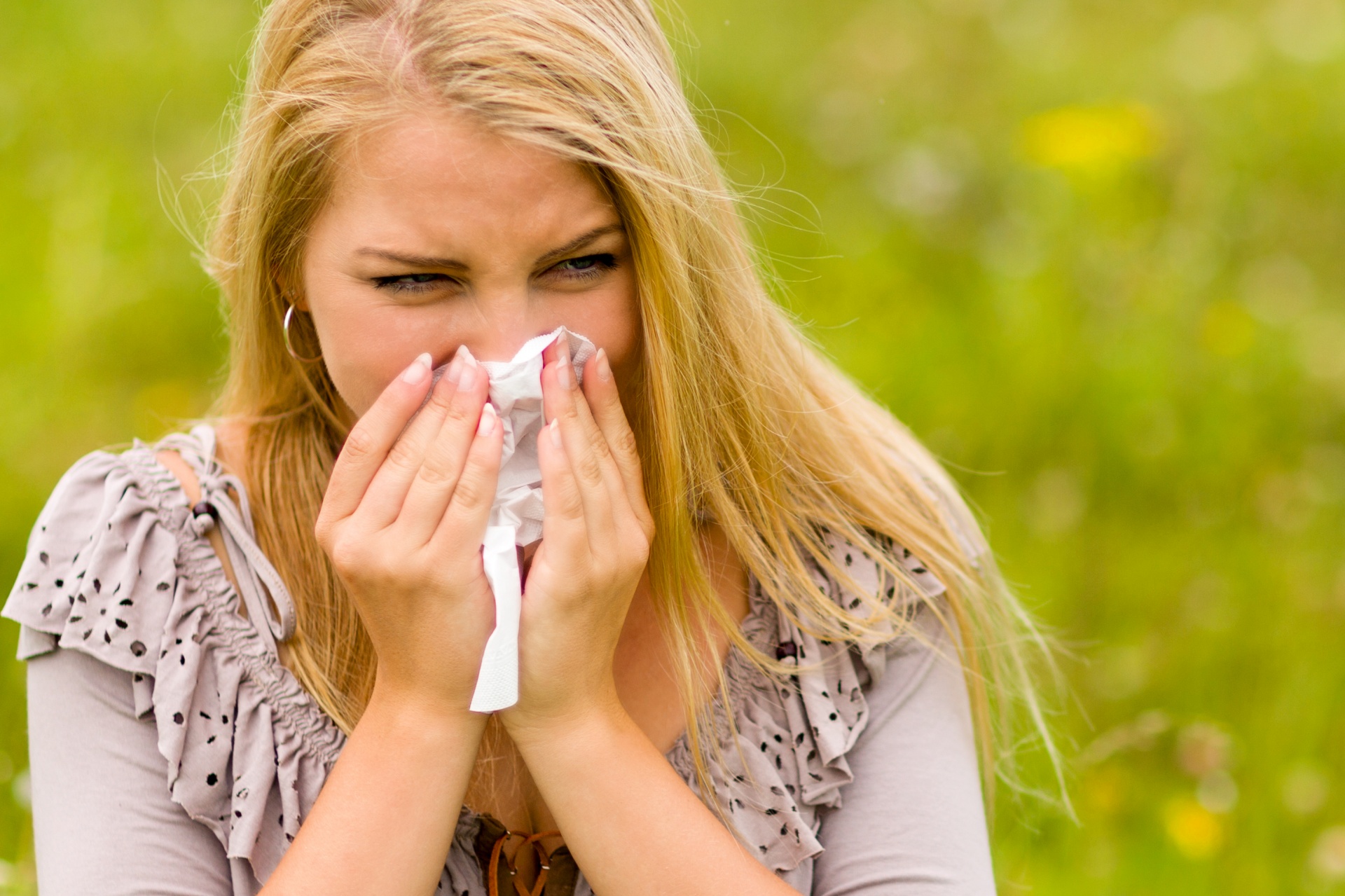Allergy Treatment in Chicago
What Are Allergies?
Allergies are one of the most common chronic conditions in the world. Typical allergy symptoms can include a wide range from inconvenience making you mildly miserable, to life-threatening reactions that put your life at risk.
Most leading experts in allergy agree that an allergic reaction starts inside the immune system. Our bodies’ immune systems job is to protect us from any invasion of ogranisms that can cause harm or illenss. If you have an allergy, what that means if your immune system has mistaken a typically harmless, foreign substance for a dangerous invader. This substance is called an allergen. The allergen causes the immune system to overreact to it and produces anitbodies called Immunoglobulin E, or IgE. These IgE antibodies then spread to cells that release histamine and other chemicals. These are what cause an alleric reaction.
Types of Allergies
There are many different types of allergies, but the most common can be separated into seven main categories:
Pollen Allergy
Pollen may be the most common of all allergic triggers. A pollen allergy is also known as “hay fever”, and referred to as “seasonal allergic rhinitis.” Pollen enters the environment during the spring, summer and fall when plants release pollen grains to fertilize and spread by traveling through the air. Common pollens include grasses, ragweed, sagebrush and tumbleweed.
Pet Allergy
Pet allergies are common. Cat allergies are twice as prevalent as dog allergies. Proteins that exist in a pet’s dander, saliva or urine may cause a reaction from the immune system. People may be more allergic to certain breeds of dogs than others, and although there are “hypoallergenic” dogs that are easier on reactions, there is no such thing as a truly non-allergic dog or cat.
Mold Allergy
Many people are used to seasonal allergies with the changing of the weather, but if you have allergies year-round, it may be caused by mold. Mold and mildew are fungi, and how they reproduce and grow causes their seeds, or spores, to float through the air. These spores can spread in either dry, warm weather or in high humidity with fog and dew. Inhaling these spores may cause allergic reactions, and because fungi can grow in both indoor and outdoor environments, they can cause issues for people at any time of the year.
Insect Allergy
The most common type of insect allergy that comes to people’s mind are reactions to stings and bites, like a bee sting. However, there are a variety of types of insects that don’t sting or bite that can cause allergies. For example, dust mites can be present in a home year-round and unknowingly cause allergies and asthma symptoms.

Food Allergy
Unfortunately, your body can react to various foods and drinks you consume and cause reactions. Depending on the substance, food allergies can affect skin, respiratory, cardiovascular or gastrointestinal tract systems. According to the Food Allergy Research and Education (FARE), there are 8 foods responsible for 90 percent of all food allergies:
– Cow milk
– Eggs
– Peanuts
– Fish
– Shellfish
– Tree nuts
– Wheat
– Soy
Drug Allergy
An allergic reaction to a medication is caused by the immune system overreacting to the drug in your system and treating it like an invader. Many times an adverse reaction may be one of the following instead of an allergy:
– Overdosing
– Expected side effects
– Indirect effects
– Drug interactions
– Worsening of known condition
– Idiosyncratic reactions
Latex Allergy
Latex is a common substance used in many everyday products like rubber bands, cleaning gloves, rubber balls, bandages and more. For people with latex allergies, skin contact with one of these can set off allergic reactions. Sometimes even breathing in latex particles in the air can cause them. Synthetic latex can safely be used and touched instead because it is not made from the same sap as normal latex.
Allergy Symptoms
-Sneezing
-Runny nose
-Stuffy nose (congestion)
-Swelling
-Cough
-Rashes
-Vomiting
-Cramps
-Wheezing
-Throat closure

Allergy Testing and Treatments
Typically testing needs to be done to determine exactly which allergens are the issue. At Premier Allergy, Asthma & Sinus Care we offer the following services:
At PAAS, we perform a comprehensive, mostly needle-free skin test panel consisting of environmental and food allergens at your first visit.Expanded testing may be available in special cases. This procedure consists of small amounts of protein from each allergen to be placed on the most superficial layer of skin to determine the extent of your body’s allergic response. Your results will be reviewed with you at the time of your visit by the provider.
The goal of immunotherapy is:
- To reduce symptoms caused by allergies/asthma.
- To reduce/eliminate the need for medications (especially steroids).
- To prevent the progression of allergies/asthma.
Immunotherapy has been shown to prevent the development of new allergies and, in children, it can prevent the progression of the allergic disease from allergic rhinitis to asthma. Allergy shots can lead to long-lasting relief of allergy symptoms even after treatment is stopped.
At Premier Allergy, Asthma and Sinus Care, we use spirometry to measure your lung function, gauge response to treatment and keep track of management of asthma and other lung conditions.
At Premier Allergy, Asthma and Sinus Care, we offer comprehensive, mostly needle-free food skin testing at your first visit. Expanded testing may be available in special cases. This procedure consists of small amounts of protein from each allergen to be placed on the most superficial layer of skin to determine the extent of your body’s allergic response.
At Premier Allergy, Asthma and Sinus Care, we offer comprehensive, mostly needle-free animal skin testing at your first visit. Animal allergies can manifest as nasal, eye, asthma, skin, or other allergic symptoms. There is a wide variety of treatments available to help patients work around their beloved pets. Our goal is to keep play with your furry friends allergy free!
New approaches to management of the asthmatic lung, allergic skin, and an ever-expanding array of other allergic conditions include therapies targeting key cells and mediators driving the inflammatory responses. These therapies, called biologics, are subcutaneous injections that are administered between every two and eight weeks in office. We currently administer biologics aimed to treat asthma, chronic idiopathic urticaria and atopic dermatitis.
Not all drug reactions are true hypersensitivity reactions. An oral challenge may have to be done to assess if a patient is truly allergic and must avoid the drug. The patient is administered small doses of the potential allergen, initially as a skin and epicutaneous test, and then incremental increases orally until the therapeutic dose is achieved. The patient is watched throughout the challenge for an immediate type reaction such as anaphylaxis. Depending on the drug, the patient may be instructed to take the drug for several days after the visit. Oral drug challenges can help to liberalize medication and treatment options and determine the potential risk of anaphylaxis.
An example would be a penicillin challenge.
An oral food challenge may be employed as the final step in the diagnosis of food allergy. Scratch testing and occasionally blood testing are required prior to a food challenge, which involves incremental increases in exposure to a suspected food allergen. Between each consumption, the patient is monitored for a reaction. A food challenge can help to liberalize a patient’s diet.

If you need diagnosis or treatment for your allergies, Premier Allergy, Asthma & Sinus Care can help. PAASC offers the latest testing and treatment options to help you find relief for your symptoms, for adults, adolescent and pediatric patients. Click below to schedule an appointment online.




